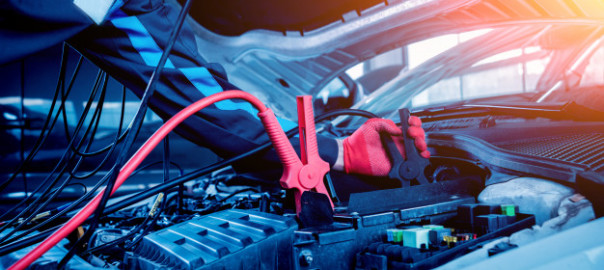Jump starting is an essential process that helps restart vehicle batteries that are experiencing issues that can potentially prevent engines from starting. Every driver should know how to jump-start a vehicle, and although this tried-and-true method to get your vehicle back on the road has maintained the same process for decades, many drivers don’t actually know how to do it. In this blog entry, the towing experts here at Towing Chicago will detail the essential things to know about jump-starting.
Determining if your Car Battery is Dead
Determine if your car battery is dead by starting the ignition. If your engine is cranking up or making sounds, your car battery isn’t dead – and in this event, you won’t need to jump-start your car. On the other hand, if you turn your ignition or press your ignition button, and no sound emanates from the engine, your vehicle’s battery is likely dead.
What do I do if my vehicle’s battery is dead?
- Check your car manual. Some cars aren’t built for jump-starting, and doing so can void your vehicle warranty.
- Make sure that you have proper cables, safety goggles, and gloves.
- Park a car close enough to your car so its cables can reach – but the cars shouldn’t be touching.
- Make sure any accessories plugged into your car like chargers are removed.
- Make sure both car’s radio, headlights, turn signals, and other electronic features are switched off.
- Don’t lean on the car or touch the battery – and don’t smoke!
- If the battery is cracked, or leaking fluid – or if it’s fluid is frozen – DO NOT attempt jump-starting, as this might result in explosions.
- Connect the positive jumper cable to the positive terminal on the dead battery – and then DO NOT touch the metal clamps to any other metal.
- Connect the other side of the positive cable to the positive battery terminal on the vehicle giving the jump.
- Connect the negative cable to the negative terminal on the jumper vehicle.
- Connect the other side of the negative cable to an exposed metal part of the dead battery vehicle like a bolt or bracket.
- Make sure the cable isn’t positioned near any moving parts of the engines.
- Start the jumper vehicle and let the engine idle for a bit for the battery to charge.
- Start the dead car – if it starts, allow it to run for 20 minutes while the battery charges.
- When removing the cables, keep them away from any metal, and remove them in reverse order from how you attached them – the negative cable on the previously disabled vehicle first.
- Then remove the other side of the negative cable on the jumper vehicle.
- Then remove the positive cable on the jumper vehicle.
- Then remove the positive cable on the previously disabled car.
If you find any of the above tips confusing or intimidating – you can rest easy. Simply contact a licensed jump start service provider like the team here at Towing Chicago – we’ll arrive at your location in as fast of a manner as possible.

